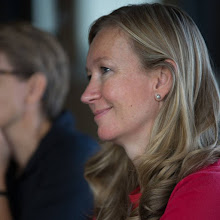Yesterday, the
University of Leicester released some of the findings of my celebrity twitter research and there has been a
small flurry of interest from the online world. For someone who writes a blog (albeit intermittantly) I find myself wondering why I now find myself flipping between feeling slightly unnerved and slightly excited. Maybe it's because I don't think many people will actually read my blog! Maybe because I find myself placing my research alongside rather more weighty issues like the
Browne report and the rescue of the
Chilean miners.
Some of the questions I've been asked are:
Do I think the celebrities are consciously self promoting and disguising this with conversational engagement?
Well, I'm not inside their heads, and I don't think Twitter is a way of seeing inside their heads either, despite what
the Guardian might suggest. But if we can infer anything about people's identity from their discourse style, then we can say that celebrities are the example par excellence of how to amplify your identity in twitter.
Who are the worst offenders?
In my sample, the distribution between promoting shows and personal self disclosure was evenly distributed across the different personalities, but there were some celebrities who never disclosed anything personal (like Boris Johnson and Arnold Schwarzenegger). It depends on whether you see the personal disclosure as good or bad as to whether you think their practice is something negative.
Who was the most interesting tweeter to read?
I enjoyed Sarah Brown the most, Andy Murray the least.
Do I tweet?
Well, that would be a 'no', despite having a twitter account (ruthtweetpage). Maybe I just can't squeeze what I want to say into 140 characters!
Labels: twitter celebrity news
